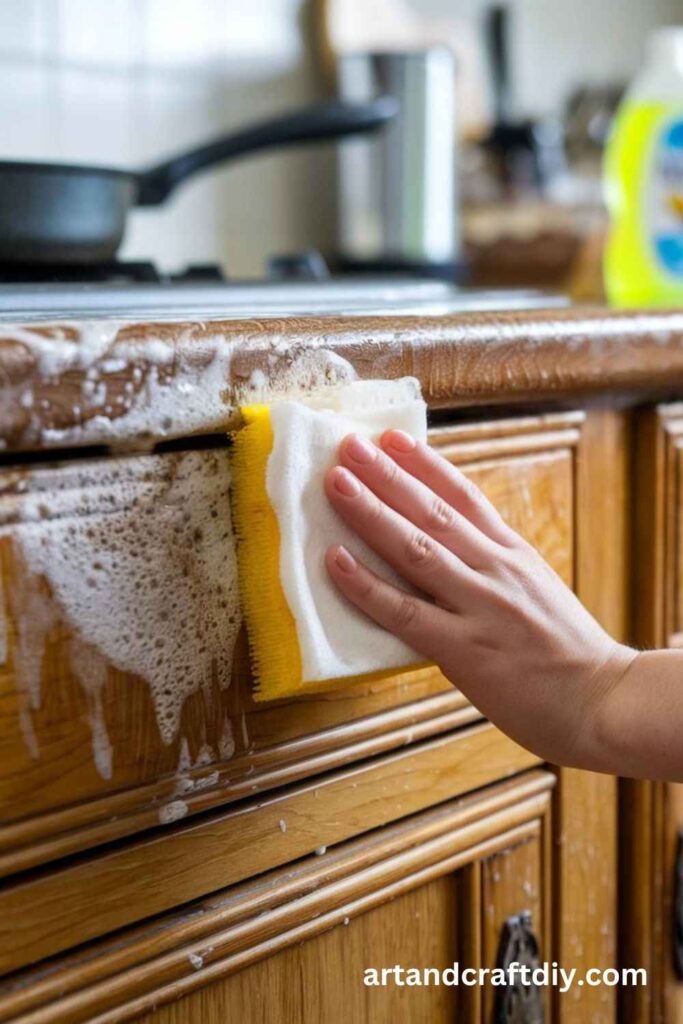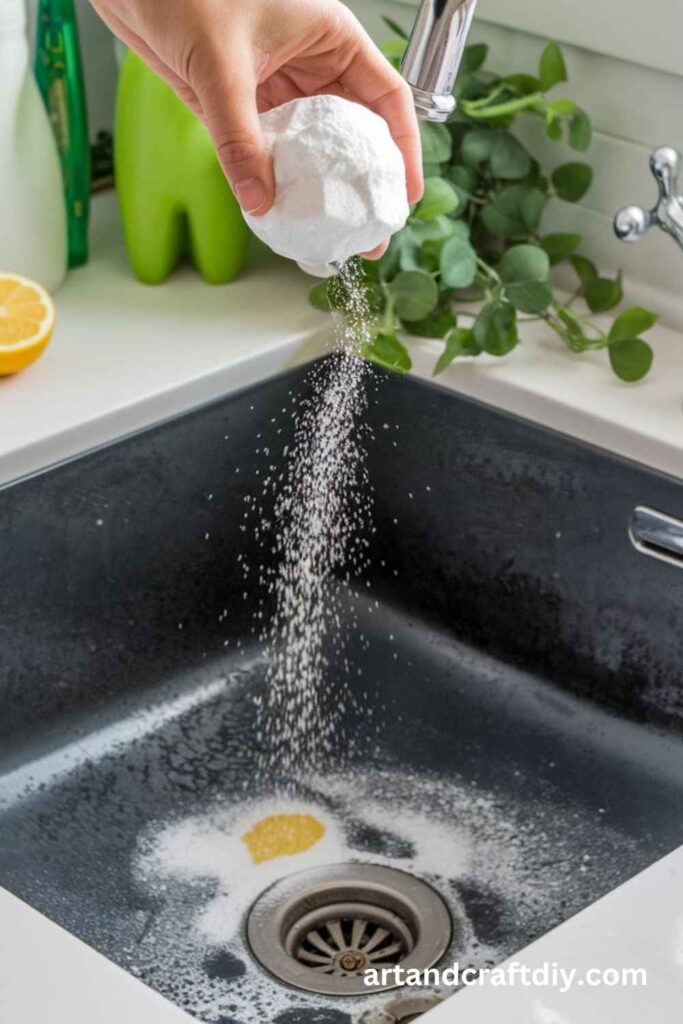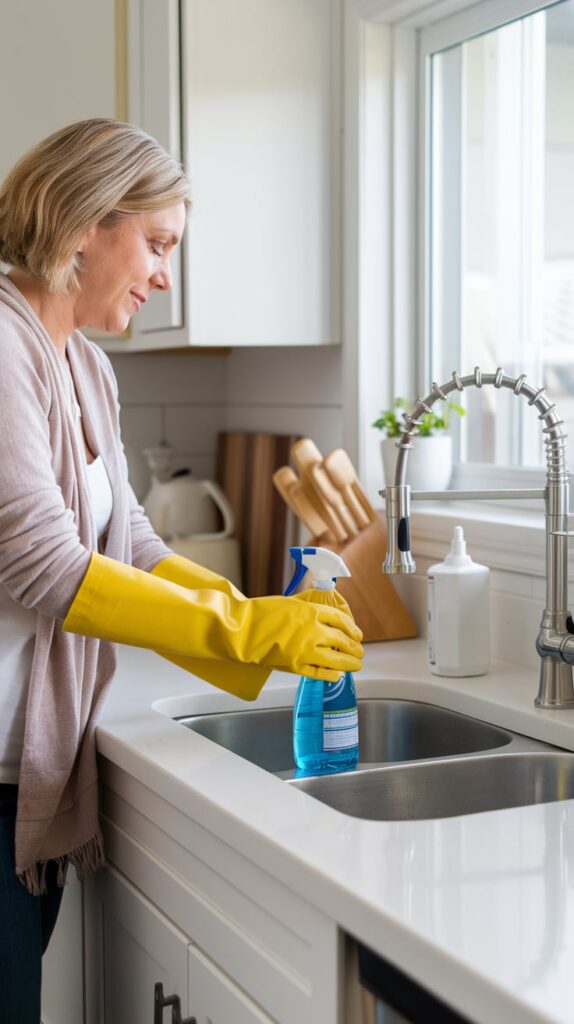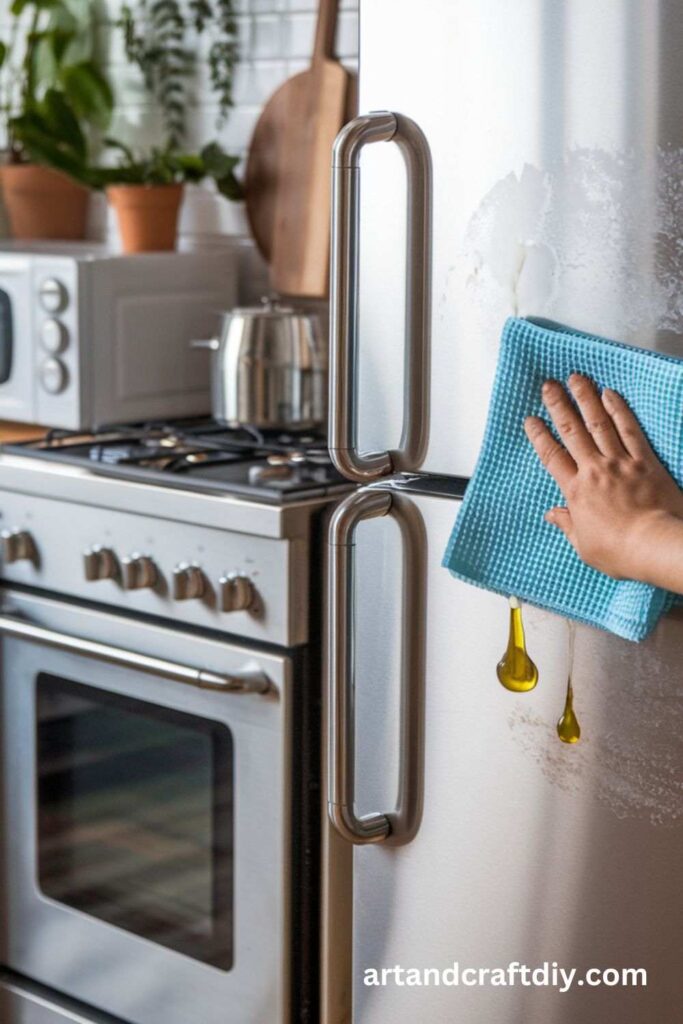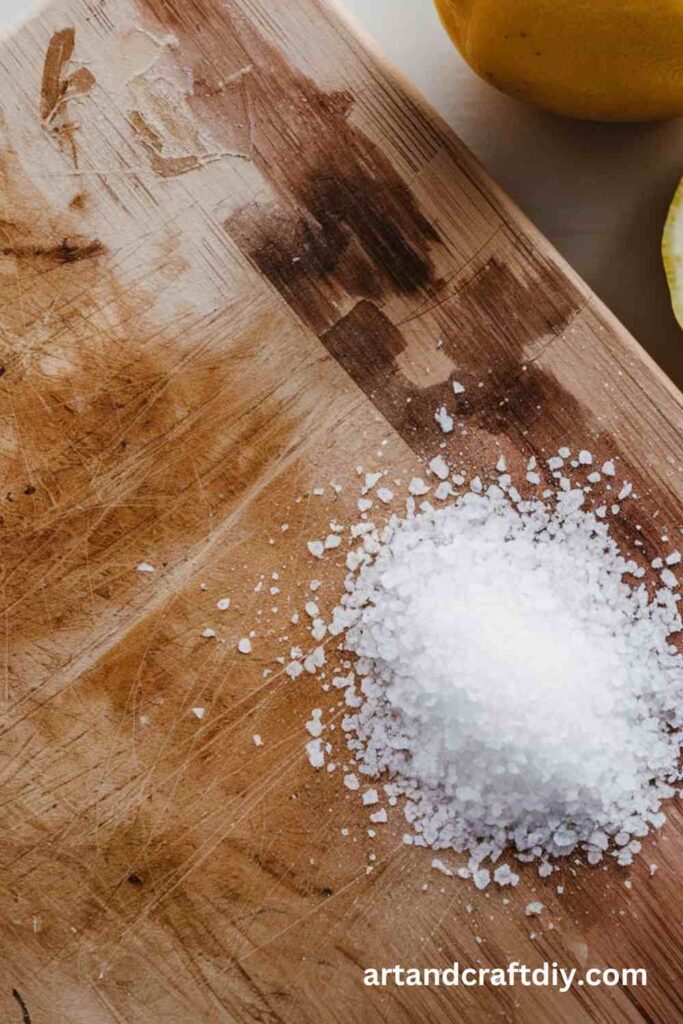Deep cleaning the kitchen is essential for maintaining a hygienic and safe cooking environment. It helps eliminate bacteria, grease buildup, and food residues that can lead to odors and pest infestations. A thorough cleaning also extends the lifespan of kitchen appliances and ensures food safety. Ideally, a kitchen should be deep cleaned at least once a month, with high-touch areas like countertops and sinks disinfected more frequently. Essential tools and supplies include microfiber cloths, scrub brushes, degreasers, baking soda, vinegar, and disinfectants. Kitchen deep cleaning hacks include using lemon and baking soda to remove stubborn stains, steam-cleaning the microwave with vinegar water, and placing a bowl of baking soda in the fridge to absorb odors.
Deep cleaning the kitchen is crucial for maintaining a sanitary and organized space, ensuring food safety, and preventing health hazards. Over time, grease, grime, and food particles accumulate in hidden areas like under appliances, inside cabinets, and in the grout of tiles, creating a breeding ground for bacteria, mold, and pests. Regular deep cleaning eliminates harmful contaminants, reduces cross-contamination risks, and keeps the kitchen smelling fresh.
Kitchen deep cleaning hacks
Kitchen deep cleaning hacks are all about transforming your cooking space with smart, efficient techniques. Whether you’re battling stubborn grease or hidden grime, Kitchen deep cleaning hacks use everyday items like vinegar, baking soda, and lemon to power through messes. Kitchen deep cleaning hacks not only save time but also make your kitchen a healthier, more inviting space to cook and gather in.
Clean Greasy Cabinets with Baking Soda and Dish Soap
Kitchen cabinets collect a layer of grease over time, especially near the stove. A simple homemade cleaner can cut through the buildup.
Materials Used:
- 1 tablespoon baking soda
- 1 teaspoon dish soap
- 1 cup warm water
- Microfiber cloth
Steps:
- Mix baking soda, dish soap, and warm water in a bowl.
- Dip a microfiber cloth into the mixture and scrub greasy areas.
- For tough stains, let the solution sit for 5–10 minutes before wiping.
- Rinse with a damp cloth and dry with a clean towel.
Refresh a Smelly Sink with Lemon and Baking Soda
Food particles and grease can make your sink drain smell bad. A natural deodorizer will freshen it up.
Materials Used:
- 1/2 cup baking soda
- 1 cup vinegar
- 1 lemon, sliced
- Hot water
Steps:
- Sprinkle baking soda down the drain.
- Pour vinegar over it and let it fizz for 5 minutes.
- Scrub the drain with a lemon slice, then rinse with hot water.
Remove Stubborn Stains from Countertops with Hydrogen Peroxide
If your countertops have tough stains, hydrogen peroxide works wonders.
Materials Used:
- 1/2 cup hydrogen peroxide
- 1 teaspoon dish soap
- Paper towels
Steps:
- Mix hydrogen peroxide and dish soap in a small bowl.
- Soak paper towels in the mixture and place them on the stained area.
- Let it sit for 10–15 minutes, then wipe clean.
Deep Clean the Microwave with Vinegar and Steam
Grease and food splatters inside the microwave can be tough to clean. Steam will loosen the grime effortlessly.
Materials Used:
- 1 cup water
- 1/2 cup vinegar
- 1 lemon (optional)
- Microwave-safe bowl
Steps:
- Pour water and vinegar into the bowl. Add lemon slices for freshness.
- Microwave on high for 5 minutes.
- Let it sit for 2 more minutes, then wipe the interior with a cloth.
Deodorize and Clean the Fridge with Baking Soda
Your fridge can develop unpleasant odors from food spills. A simple baking soda treatment will help.
Materials Used:
- 1/2 cup baking soda
- Warm water
- Sponge
Steps:
- Mix baking soda with warm water to create a paste.
- Scrub shelves and drawers with the mixture.
- Rinse with a damp cloth and let dry.
Shine Stainless Steel Appliances with Olive Oil
Fingerprints and smudges make stainless steel look dull. Olive oil restores its shine.
Materials Used:
- A few drops of olive oil
- Microfiber cloth
Steps:
- Apply a few drops of olive oil onto a microfiber cloth.
- Rub in circular motions over stainless steel surfaces.
- Buff with a dry cloth to remove excess oil.
Unclog and Deodorize Garbage Disposal with Ice and Salt
A dirty garbage disposal can get clogged and smell bad. Ice and salt will clear it out.
Materials Used:
- 1 cup ice cubes
- 1/2 cup coarse salt
- 1 lemon, cut in half
Steps:
- Pour ice cubes and salt into the garbage disposal.
- Run cold water and turn on the disposal to grind the ice.
- Follow with lemon halves to deodorize.
Clean the Oven with Baking Soda and Vinegar
Oven grease and burnt food can be tough to remove. This natural method will break it down.
Materials Used:
- 1/2 cup baking soda
- 1/4 cup vinegar
- Warm water
- Sponge
Steps:
- Make a paste with baking soda and warm water.
- Spread it inside the oven and let it sit overnight.
- Spray vinegar on the dried paste and wipe clean.
Sanitize the Cutting Board with Salt and Lemon
Wooden cutting boards absorb bacteria and odors. Salt and lemon will disinfect them.
Materials Used:
- 1/4 cup coarse salt
- 1 lemon, cut in half
Steps:
- Sprinkle salt over the cutting board.
- Scrub using a lemon half, squeezing juice as you go.
- Let sit for 5 minutes, then rinse with warm water.
Remove Grease from Stove Burners with Ammonia
Grease buildup on burners can be hard to clean. Ammonia dissolves the grime effortlessly.
Materials Used:
- 1/4 cup ammonia
- Ziplock bags
Steps:
- Place each burner in a Ziplock bag.
- Add 1/4 cup of ammonia and seal the bag overnight.
- Wipe clean with a sponge the next day.
Clean Tile Grout with Baking Soda and Hydrogen Peroxide
Grimy grout lines can make your kitchen look dirty. A deep clean will restore their brightness.
Materials Used:
- 1/2 cup baking soda
- 1/4 cup hydrogen peroxide
- Toothbrush
Steps:
- Mix baking soda and hydrogen peroxide into a paste.
- Scrub grout lines using a toothbrush.
- Let sit for 10 minutes, then rinse.
Disinfect Kitchen Sponges with Microwave Heat
Kitchen sponges harbor bacteria. Microwaving them kills germs instantly.
Materials Used:
- Kitchen sponge
- Bowl of water
Steps:
- Soak the sponge in water.
- Microwave on high for 1 minute.
- Let cool before using.
Freshen Up the Dishwasher with Vinegar and Baking Soda
Dishwashers can accumulate food residue and develop odors. A simple deep clean will fix this.
Materials Used:
- 1 cup vinegar
- 1/2 cup baking soda
Steps:
- Place a cup of vinegar on the top rack of an empty dishwasher.
- Run a hot cycle.
- Sprinkle baking soda in the bottom and run a short cycle.
Wipe Down Walls and Backsplash with Dish Soap
Kitchen walls and backsplashes can collect grease over time. A dish soap solution will clean them easily.
Materials Used:
- 1 teaspoon dish soap
- 1 cup warm water
- Microfiber cloth
Steps:
- Mix dish soap with warm water.
- Wipe down walls and backsplash with a cloth.
- Rinse with a damp cloth.
Clean and Organize the Pantry with Vinegar Spray
Pantry shelves collect dust and spills. A vinegar spray disinfects them.
Materials Used:
- 1 cup vinegar
- Spray bottle
- Paper towels
Steps:
- Empty pantry shelves.
- Spray vinegar and wipe down with paper towels.
- Let dry before restocking.
Smart Maintenance Hacks for a Fresh and Clean Kitchen
Keeping your kitchen fresh and spotless doesn’t have to be a daunting task. With smart maintenance habits, you can prevent grease buildup, eliminate odors, and maintain a clean space effortlessly. Here are some practical daily and weekly cleaning routines, simple grease-fighting tricks, and DIY air fresheners to ensure your kitchen always smells and looks great.
1. Daily and Weekly Cleaning Habits for a Fresh Kitchen
✅ Wipe down surfaces daily – Clean countertops, stove, and dining tables with a mild cleaning solution after every meal.
✅ Sweep and mop regularly – A quick sweep every evening and a deep mop once a week keeps floors grime-free.
✅ Wash dishes immediately – Avoid letting dirty dishes pile up to prevent bacteria and bad odors.
✅ Empty the trash frequently – Take out the garbage daily or as soon as it’s full to avoid lingering smells.
✅ Deep-clean appliances weekly – Wipe down your microwave, refrigerator handles, and oven to prevent buildup.
2. Preventing Grease Buildup with Simple Tricks
🛢️ Use baking soda and vinegar – A paste of baking soda and water can remove stubborn grease stains.
🛢️ Wipe spills immediately – Don’t let grease harden; clean it up right away with a damp cloth and dish soap.
🛢️ Line cabinets and stove area – Use wax paper or shelf liners to catch grease and replace them regularly.
🛢️ Use a splatter guard – Minimize grease splatters by covering pans while cooking.
🛢️ Clean your range hood filter – Soak it in hot water and dish soap once a month to prevent grease accumulation.
Motivation to Enjoy a Sparkling Clean Kitchen
A clean kitchen is more than just a visual delight—it creates a welcoming space for cooking, dining, and spending time with loved ones. Maintaining a sparkling clean kitchen has numerous benefits that extend beyond aesthetics, making it a place of comfort, efficiency, and inspiration.
Why You Should Keep Your Kitchen Sparkling Clean
-
Boosts Mood & Reduces Stress
- A clutter-free and spotless kitchen brings a sense of calm and order.
- Mess and grime can feel overwhelming, while a clean space promotes relaxation.
-
Encourages Healthy Eating
- A tidy kitchen motivates you to cook homemade meals instead of opting for takeout.
- Clean countertops make food prep more enjoyable and stress-free.
-
Enhances Efficiency & Saves Time
- A well-organized kitchen means less time searching for utensils and ingredients.
- Cleaning as you go makes cooking a smoother and faster process.
-
Creates a Hygienic Environment
- Regular cleaning prevents bacteria and pests, ensuring food safety.
- A sanitized kitchen protects your family’s health.
-
Adds a Sense of Accomplishment
- Keeping your kitchen spotless gives a feeling of pride and satisfaction.
- It’s rewarding to step into a sparkling space you’ve maintained.
FAQ
What is the best Kitchen deep cleaning hacks countertops?
Start by clearing the surface and wiping it with warm, soapy water. For stubborn stains, use a paste of baking soda and water. Disinfect using a vinegar-water solution or a food-safe disinfectant.
How do I remove grease buildup from kitchen cabinets?
Mix equal parts vinegar and warm water in a spray bottle. Spray the greasy areas and let it sit for a few minutes before wiping with a microfiber cloth. For tougher grease, add a few drops of dish soap or use a baking soda paste.
What’s the easiest way to clean a greasy stove and burners?
Remove the burners and soak them in a mixture of hot water and dish soap for 30 minutes. Scrub with a brush or baking soda paste. For stovetops, use a degreaser or a mixture of baking soda and vinegar.
How can I eliminate bad odors from my kitchen sink?
Pour a cup of baking soda followed by a cup of vinegar down the drain. Let it fizz for 15 minutes, then rinse with hot water. Grinding lemon peels in the garbage disposal also helps freshen the sink.

Hi, I’m Victoria, an art and craft teacher at Newark City Schools, where I have the joy of working with middle school students to help them explore their creativity and develop their artistic talents. I believe that art is a powerful way for students to express themselves, and I strive to make every lesson a fun, engaging, and inspiring experience.
I created this website to share the art and craft projects, techniques, and resources that I use in my classroom, hoping to inspire both educators and young artists alike. Whether you’re a teacher looking for new ideas or a student eager to try something new, I’m excited to provide creative tools and projects that anyone can enjoy.
When I’m not in the classroom, I love experimenting with different art forms and learning new crafting techniques. My goal is to help others discover the joy of making things with their hands, and I hope my website serves as a space for everyone to explore their creative potential.


